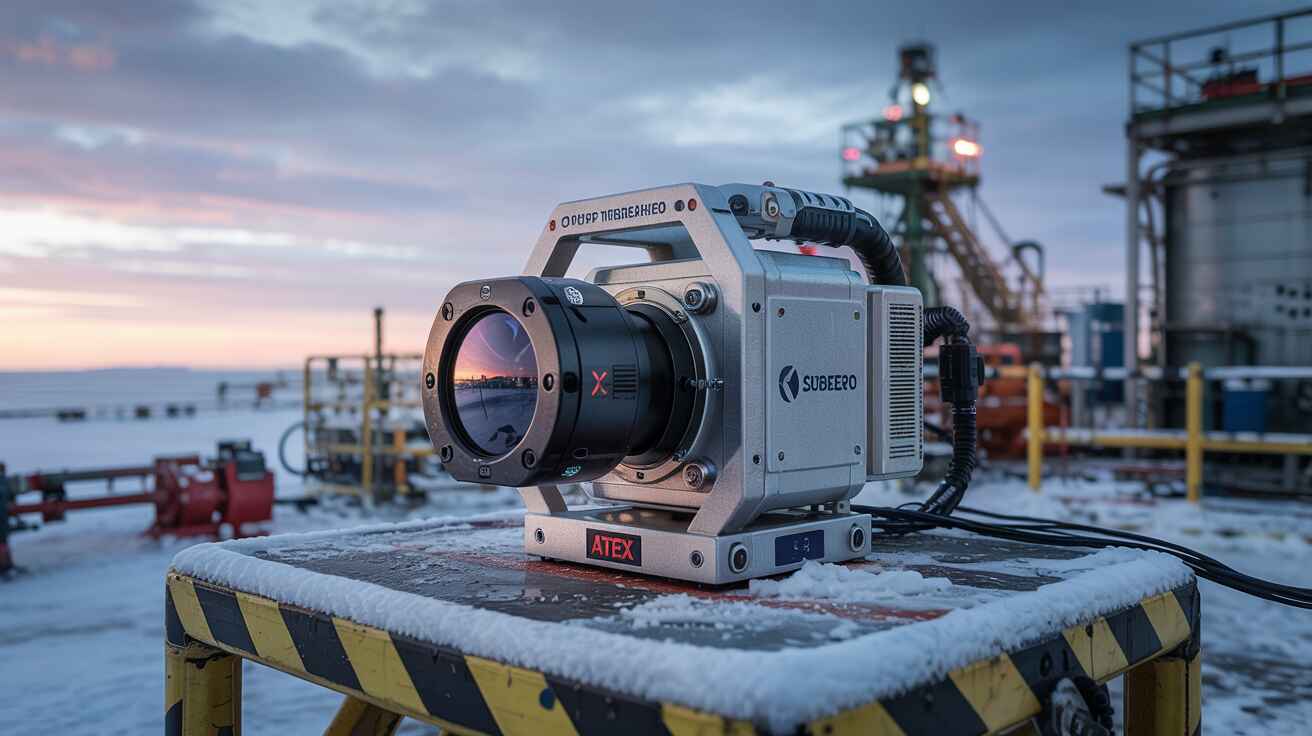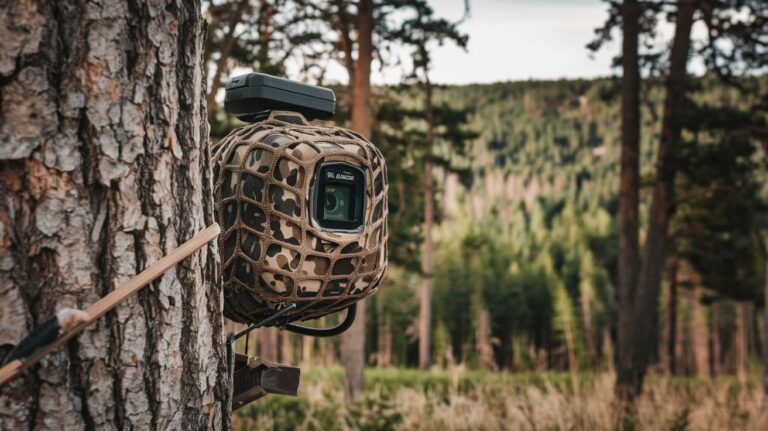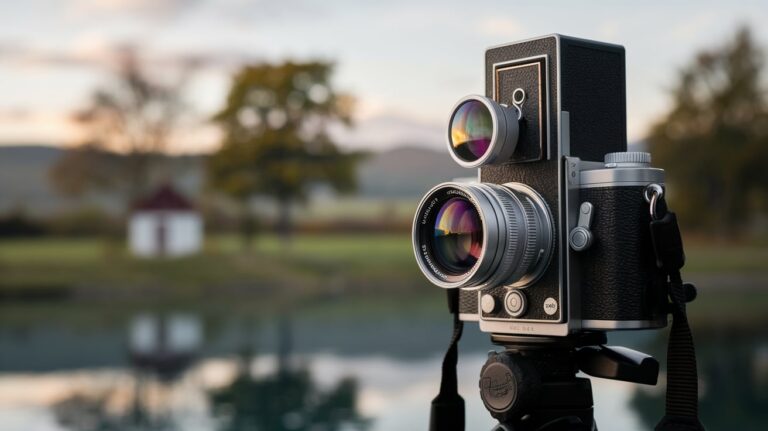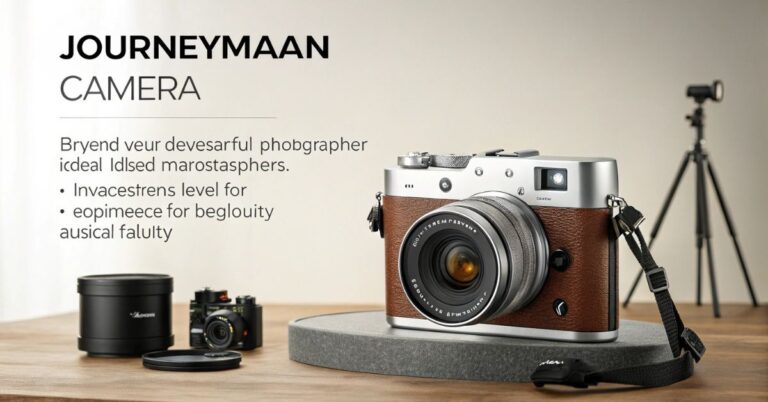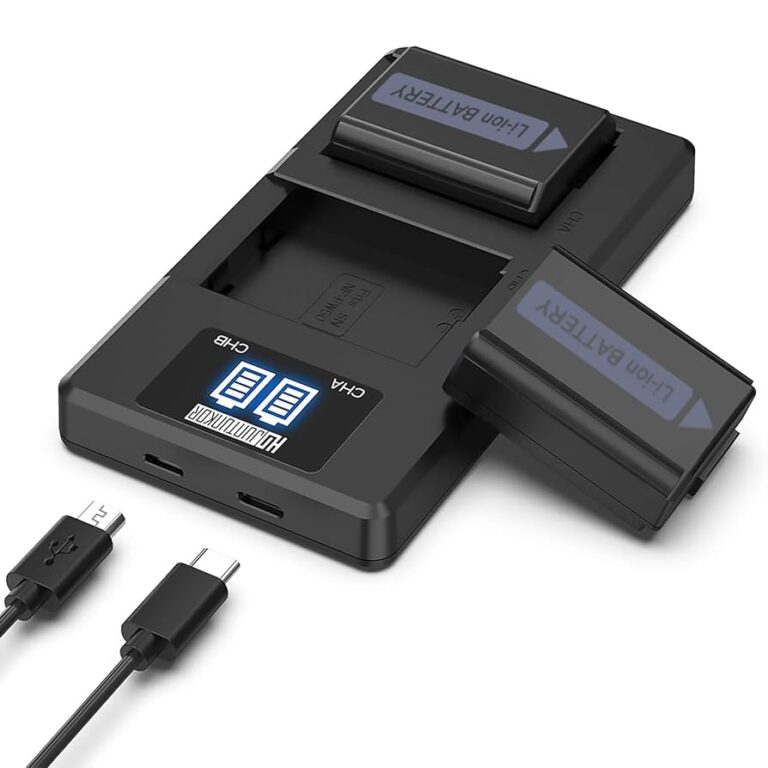Subzero Industrial Camera ATEX Rated – Safe Monitoring in Extreme Cold!
The subzero industrial camera ATEX rated is built to work in very cold temperatures and risky areas. It’s explosion-proof and gives clear images, making it perfect for industries like oil, gas, and chemicals. These cameras keep workers safe while ensuring everything runs smoothly.
Stay tuned with us as we talk more about the subzero industrial camera ATEX rated. We’ll explore how it works, its uses, and why it’s so important for safety in extreme environments. Don’t miss out!
What Is a Subzero Industrial Camera ATEX Rated? – Explore its Uses!
A subzero industrial camera ATEX rated is a special type of camera made for very cold and dangerous places. It can work in freezing temperatures (as low as -40°C) and in areas where there might be fire or explosions.
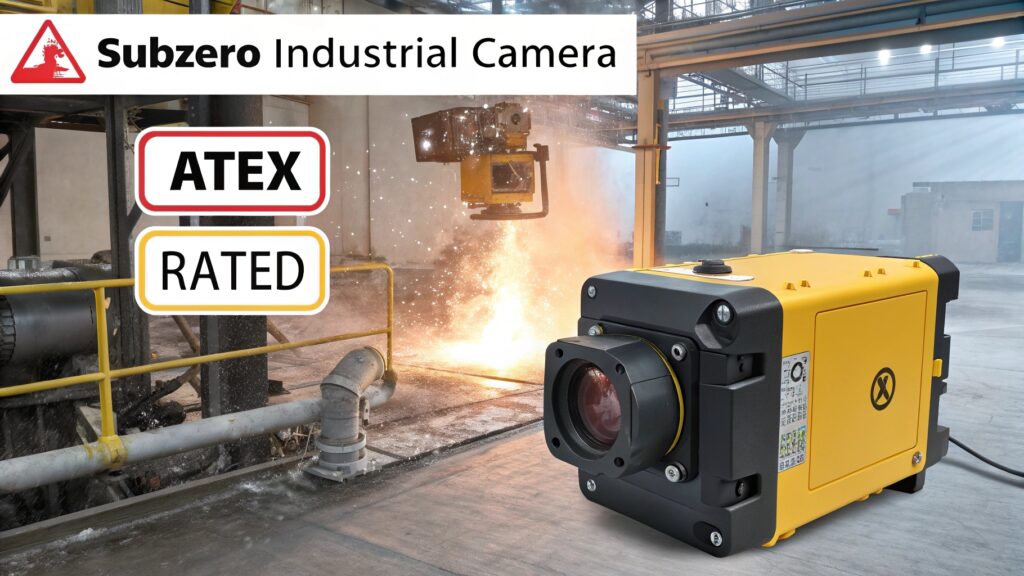
The word ATEX comes from European safety rules. These rules make sure machines used in risky places won’t cause sparks or fires.
These cameras are built with:
- Strong, explosion-proof covers
- Heaters inside to keep warm
- Tough parts that can handle freezing weather
They are used in places like oil fields, chemical plants, and cold storage areas where safety and working in the cold are both very important.
Read Also: Leica Lens Repair Cost – Common Issues, Pricing, and Tips!
What Does “ATEX Rated” Mean? – Key Standards!
What Is ATEX Certification?
ATEX stands for “ATmosphères EXplosibles”, which means explosive environments. This certification comes from two important European safety rules:
- ATEX 2014/34/EU: For machines and tools used in places with explosive air.
- ATEX 1999/92/EC: To protect workers in these dangerous areas.
What Makes a Camera ATEX Rated?
To get the ATEX rated label, a camera must follow strict safety steps:
- No Sparks: It must be designed so it can’t make sparks.
- Cool Surface: It must not get hot enough to light gas or dust.
- Explosion-Proof Housing: It should have a strong case that can handle blasts.
- Lab Tested: It must pass tough safety tests in a lab.
Why ATEX Certification Is Important
In places like oil refineries, gas plants, or chemical factories, the air can have flammable gas or dust. Using ATEX-rated gear is not just a good idea it’s required by law in many countries to protect both people and property.
Why These Cameras Excel in Subzero Environments? – Built for the Cold!
1. Internal Heating Systems
Subzero environments cause condensation and ice buildup, which can hinder a camera’s visibility. These cameras use internal heaters that prevent lenses and sensors from freezing.
2. Thermal Insulation
Thick insulation protects sensitive internal components from temperature shocks, ensuring uninterrupted operation.
3. Low-Temperature Electronics
Each component is designed to function in extreme cold. Standard electronics often fail below freezing, but subzero cameras use low-temperature rated PCBs, capacitors, and processors.
4. Impact and Weather Resistance
Their rugged casings resist ice, snow, and even chemical corrosion. IP67 or higher ingress ratings are common.
Industry Use Cases for Subzero Industrial Camera ATEX Rated – See Real-life Examples
Subzero industrial camera ATEX rated cameras are used in many industries where it’s both very cold and possibly dangerous due to flammable materials. In places like oil and gas sites, these cameras help check tanks and pipes without sending people into risky areas. In chemical factories, they work non-stop to safely watch areas filled with explosive gases.
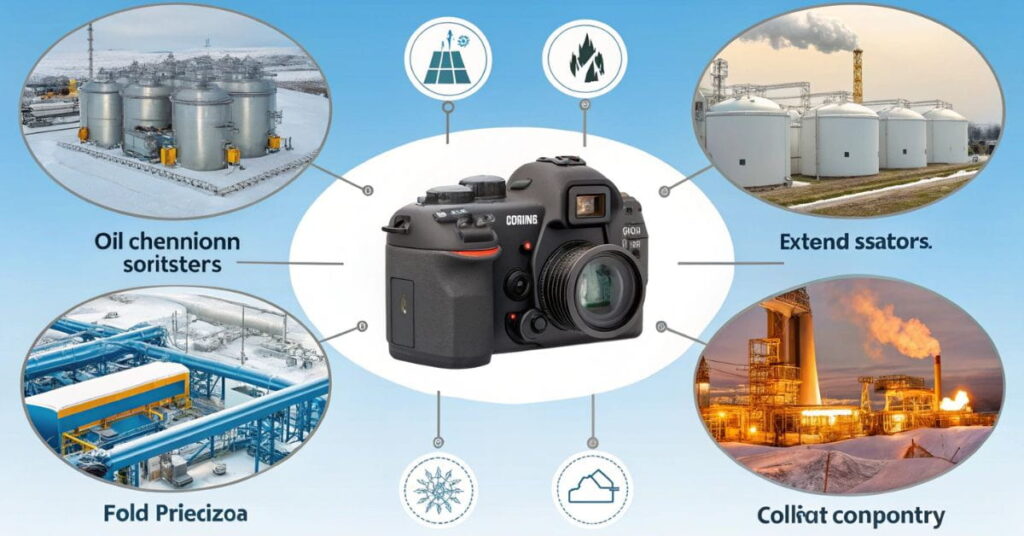
They are also used in mines, military bases, and cold food storage buildings. In freezing places like mountain mines or cold army zones, they keep watch and help keep workers safe. In food factories with freezing rooms, they help monitor frozen goods and daily work without breaking down in the cold.
Read Also: Canon Rebel T3i DSLR Camera – Everything You Need to Know!
Features That Make Subzero Industrial Cameras Exceptional – Understand the Technology!
Explosion-Proof Enclosures
These housings are usually made of stainless steel or reinforced aluminum, protecting against both pressure and impact.
Thermal Imaging
Allows visibility in darkness, smoke, fog, or snow.
Infrared Night Vision
Crucial for low-light conditions, these features enhance visibility when traditional lighting isn’t available.
Zoom and Pan-Tilt-Zoom (PTZ) Capabilities
Users can remotely control focus and angle, reducing the need for physical inspections.
Real-Time Streaming and Alerts
Live feeds and automated alerts help in quick decision-making during emergencies.
Installation Tips for Maximum Performance – Optimize your setup!
- Mount away from heating vents or cooling ducts: Installing the camera away from vents helps prevent false thermal readings caused by sudden temperature changes. This ensures more accurate monitoring and reduces potential system errors.
- Use vibration-resistant mounts in high-activity zones: In areas with heavy movement, like mining conveyors, vibration-resistant mounts are crucial. They help keep the camera stable, preventing damage and ensuring consistent performance in rough environments.
- Ensure enclosure seals are intact: The camera’s enclosure seals must be checked regularly to ensure they remain intact. Proper seals are essential for maintaining ATEX compliance and protecting internal components from dust or explosive gases.
- Regular firmware updates: Keeping the camera’s firmware updated ensures that the latest AI-based analytics and reporting features are active. Regular updates help improve overall functionality and performance, keeping the system reliable over time.
How ATEX Certified Cameras Ensure Worker Safety? – Learn how it works!
ATEX certified cameras help keep workers safe by preventing sparks and heat that could cause fires or explosions in dangerous areas. These cameras have strong, explosion-proof cases and can control temperatures to avoid risks. They let workers monitor things from a safe distance, without having to enter risky places.
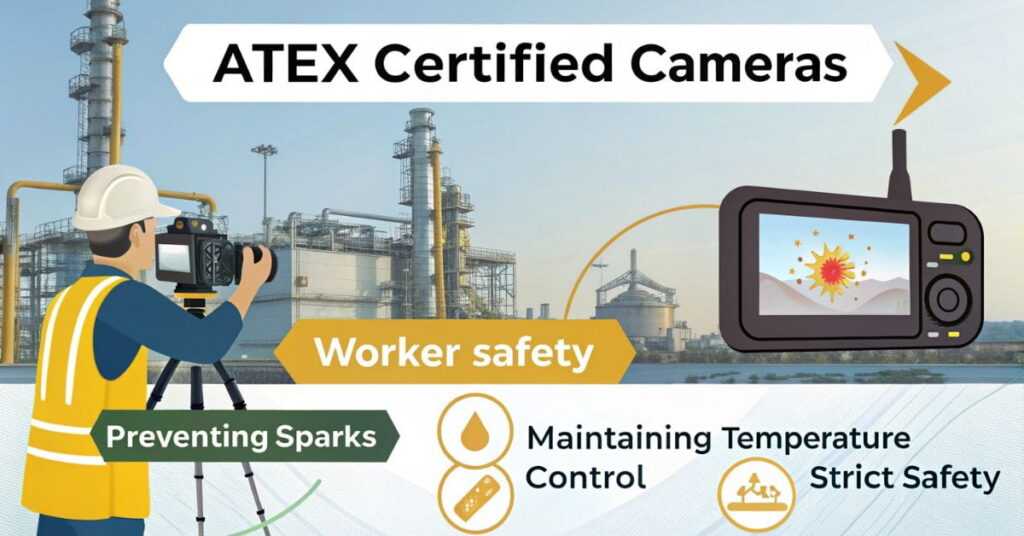
These cameras are built to follow strict safety rules, making sure they work well even in tough conditions. With 24/7 monitoring, they help keep important machines and operations safe without putting people in harm’s way. Using these cameras helps businesses meet safety laws and protect their workers.
Read Also: Do Sigma Lenses Fit Sony Cameras? – Compatibility and Performance!
Common Issues with Subzero Industrial Camera ATEX Rated – Troubleshoot Easily!
Battery Life in Extreme Cold
In very cold conditions, battery performance can drop, causing shorter operation times. This is especially problematic in environments where the camera needs to operate continuously.
Maintenance and Upkeep
Regular maintenance is crucial for ensuring that cameras stay in good working order. Harsh industrial environments can lead to wear and tear that needs attention to keep the camera performing reliably.
Limited Wireless Connectivity
In remote or extreme environments, getting a strong wireless signal can be difficult. The ATEX-rated cameras may face challenges in transmitting data in such conditions, affecting their remote monitoring capabilities.
Cost of Installation
The cost of setting up ATEX-rated cameras can be high. Specialized enclosures, explosion-proof designs, and installation in hazardous environments all contribute to the overall cost.
Complex Setup
Setting up these cameras for optimal use can be tricky and might require technical expertise. The configuration of both the camera and its protective housing needs careful attention to function properly in extreme conditions.
Heavy Design
Due to the protective features required for ATEX compliance, these cameras are often bulkier and heavier. This can make installation in tight spaces more difficult and may require additional support structures.
Future Trends in Subzero Industrial Camera Technology – Embrace new Features!
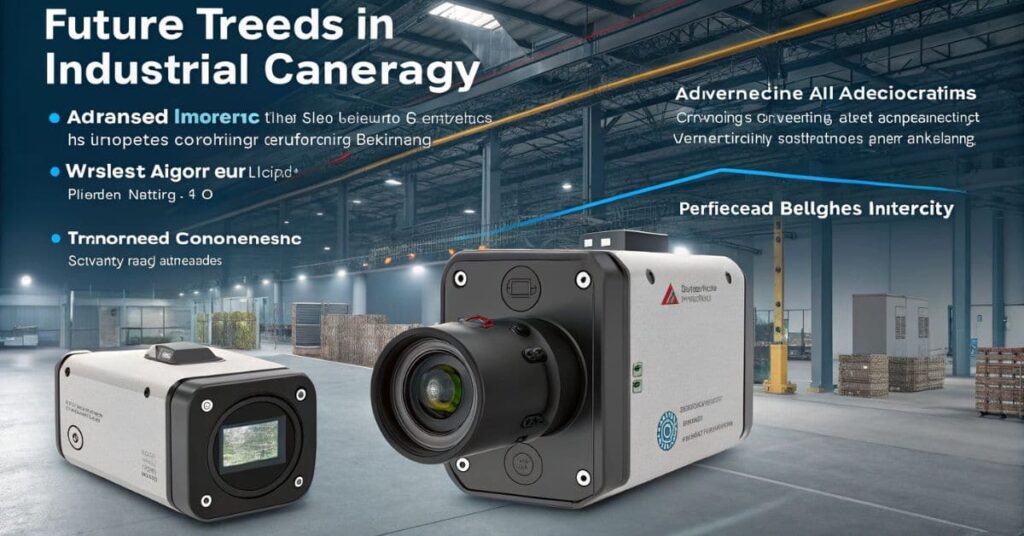
- Advanced AI Integration
Future subzero industrial cameras will likely feature more powerful AI capabilities. These cameras will be able to detect anomalies, such as gas leaks or equipment malfunctions, without requiring constant human monitoring, increasing overall safety and efficiency. - Improved Battery Performance
As technology advances, battery life in extreme cold temperatures will improve. Newer batteries and energy-efficient designs will allow these cameras to operate for longer periods without needing frequent recharging or replacements. - Smaller and Lighter Designs
Technological innovations will lead to more compact and lightweight designs, making subzero industrial cameras easier to install and use in tight or difficult spaces while still maintaining the explosion-proof capabilities required for ATEX certification. - Enhanced Wireless Connectivity
Wireless technology for industrial cameras is advancing, and future models will likely offer better performance in remote and extreme environments. This will allow for improved real-time data transmission, helping teams make quicker decisions based on accurate visual data. - Greater Durability and Longevity
With advancements in materials and construction, future subzero industrial cameras will be even more durable. These improvements will ensure that cameras continue to function in the harshest environments for extended periods, reducing the need for frequent replacements. - Integration with IoT (Internet of Things)
Future cameras will become even more integrated with IoT systems. This means they will connect seamlessly with other monitoring systems, sensors, and machines to provide a more holistic view of operations in hazardous environments, improving decision-making and safety.
FAQs:
Are there wireless subzero industrial cameras available?
Yes, many modern subzero industrial cameras come with wireless capabilities, allowing for real-time monitoring and easier data transmission, even in remote locations.
What power sources do subzero industrial cameras use?
These cameras typically use durable, long-lasting battery packs or continuous power supplies, designed to function efficiently in low temperatures.
How do subzero industrial cameras handle condensation?
Many of these cameras are equipped with anti-condensation technologies, such as heaters, to maintain clear imaging and prevent internal fogging in extreme cold.
Can a subzero industrial camera work in extremely cold temperatures?
Yes, these cameras are specifically designed to operate in extremely cold conditions, often as low as -40°C, making them ideal for Arctic or high-altitude environments.
What industries use subzero industrial cameras with ATEX ratings?
These cameras are commonly used in industries like oil and gas, chemical manufacturing, mining, aerospace, and food processing where both cold temperatures and explosive hazards are present
Conclusion:
Subzero industrial cameras with ATEX ratings play a crucial role in ensuring safety in environments with extreme cold and explosive risks. These cameras are built to withstand harsh conditions while providing reliable monitoring for industries such as oil and gas, mining, and aerospace. With their explosion-proof design, they help prevent accidents and protect workers.
As technology advances, these cameras continue to evolve, offering better performance, smarter features, and enhanced safety. Their importance in hazardous workplaces will only grow, making them an essential tool for ensuring safety and compliance.
Read Also:
